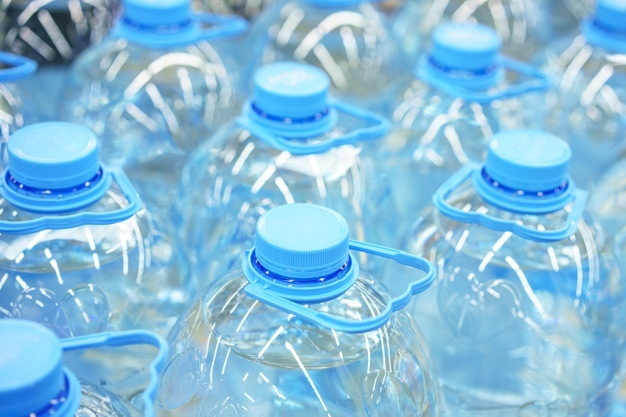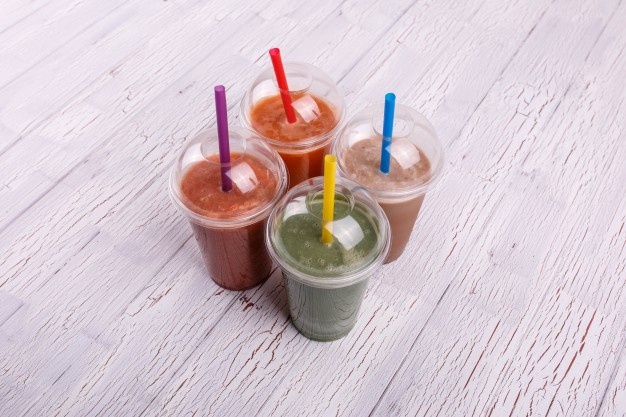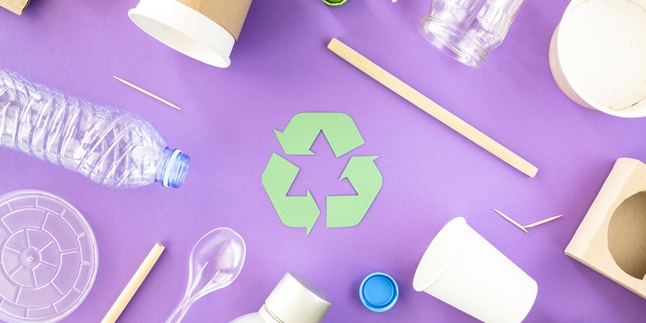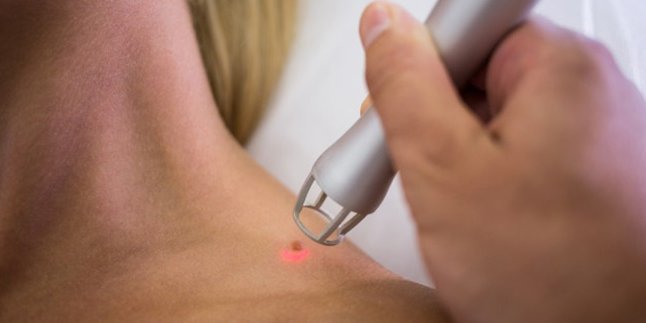Kapanlagi.com - Plastic is one of the materials that is often used by most people. Each type of plastic has its own uses and dangers for humans and the environment. In fact, the widespread use of plastic has caused plastic waste to pile up. However, plastic is one of the waste materials that is not easy to decompose. Therefore, currently the use of plastic and other plastic-based items is being reduced. Of course, this is to maintain the health and cleanliness of the environment.
For those of you who don't know, there are actually several types of plastic that are certainly very different. Some types of plastic can be reused, while other types of plastic cannot be used repeatedly. Due to this lack of knowledge, many people still use plastic carelessly without considering its purpose. Well, so that you won't make mistakes anymore, here are several types of plastic that you often encounter. Let's take a look at the following review.
1. Polyethylene Terephthalate (PETE)

The first type of plastic you need to know is Polyethylene Terephthalate or PETE. This type of plastic is often used for food and beverage packaging because of its strong ability to prevent oxygen from entering and damaging the products inside. Not only that, PETE plastic can also retain carbon dioxide in carbonated drinks so that it does not escape.
Usually, you can find this type of plastic with its characteristic transparent appearance in mineral water bottles, soda bottles, and other plastic containers. It is important to note that this type of plastic is only for single-use. This is because PETE contains antimony trioxide which can cause cancer in living tissues.
2. High-Density Polyethylene (HDPE)
High-Density Polyethylene or HDPE is the second type of plastic, which is milky white in color and is used for detergent bottles, shampoo bottles, milk bottles, medicine bottles, and so on. This type of bottle is known to be stronger and thicker than PETE.
Unlike PETE, HDPE can be used repeatedly. HDPE is also relatively more stable than PETE. HDPE is a safer choice for storing food and beverages. This type of plastic has strong, hard, opaque, and high-temperature resistant characteristics, which can prevent chemical reactions between the packaging and the food inside.
3. Polyvinyl Chloride (PVC)

Next, the third type of plastic that you need to know is Polyvinyl Chloride (PVC). This type of plastic has a characteristic of being hard and sturdy. This type of plastic is widely used as water pipes, juice bottles, children's toys, and vinyl flooring. Generally, this type of plastic will melt when exposed to a temperature of 80 degrees. In addition, PVC plastic is also the most difficult to recycle compared to other materials. This plastic can also be harmful to the kidneys and liver. Therefore, this type of plastic is never used as a plastic bottle for drinks because it contains harmful substances.
4. Low-Density Polyethylene (LDPE)
Low-Density Polyethylene (LDPE) is the fourth type of plastic that is most widely used worldwide. This type of plastic does not cause chemical reactions when in contact with other objects (food and drinks), but it is difficult to destroy. LDPE itself has strong properties and is slightly light-permeable.
Generally, this type of plastic is used for food containers, clothing bags, and shopping bags. This type of plastic has high flexibility and long durability. LDPE is also safe to recycle and has good resistance to chemical reactions.
5. Polypropylene (PP)

Next, Polypropylene (PP) is the fifth type of plastic that is often used for bottle caps, food containers, medicine bottles, and baby bottles. The characteristics of this type of plastic are heat resistant, transparent, and slightly shiny. In addition, PP plastic is the safest choice for food and beverage containers, and can be used multiple times due to its durability. However, this type of plastic is very difficult to recycle.
6. Polystyrene (PS)
Polystyrene (PS) is the sixth type of plastic that is lightweight and easily molded for various purposes. Usually, you can find it in disposable drinking cups or styrofoam food containers, egg cartons, and plastic picnic utensils. PS plastic is harmful to health because it contains styrene, a substance that can cause nerve, brain, and reproductive disorders in women. Therefore, many people are starting to avoid choosing this type of plastic as a food container.
7. Other (Lainnya)
The seventh type of plastic is another type such as PC (Polycarbonate), SAN (Styrene Acrylonitrile), and ABS (Acrylonitrile Butadiene Styrene). In other words, it is an unidentified type of plastic like types 1 to 6. Its content is dangerous when mixed with food. This type of plastic in this category is commonly used in CDs, household appliances, and electronic devices.
Those are the various types of plastics and their uses that you need to know. Hopefully, it is useful and adds to your knowledge.
(kpl/dtm)
Disclaimer: This translation from Bahasa Indonesia to English has been generated by Artificial Intelligence.















